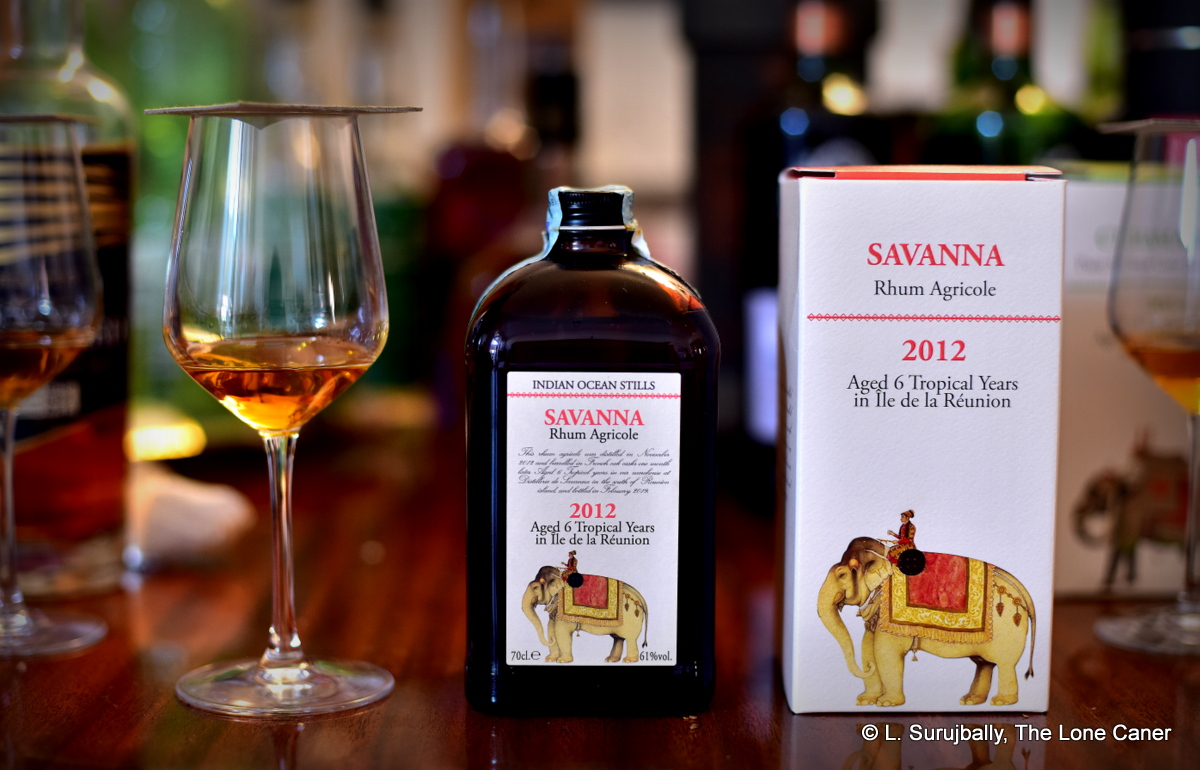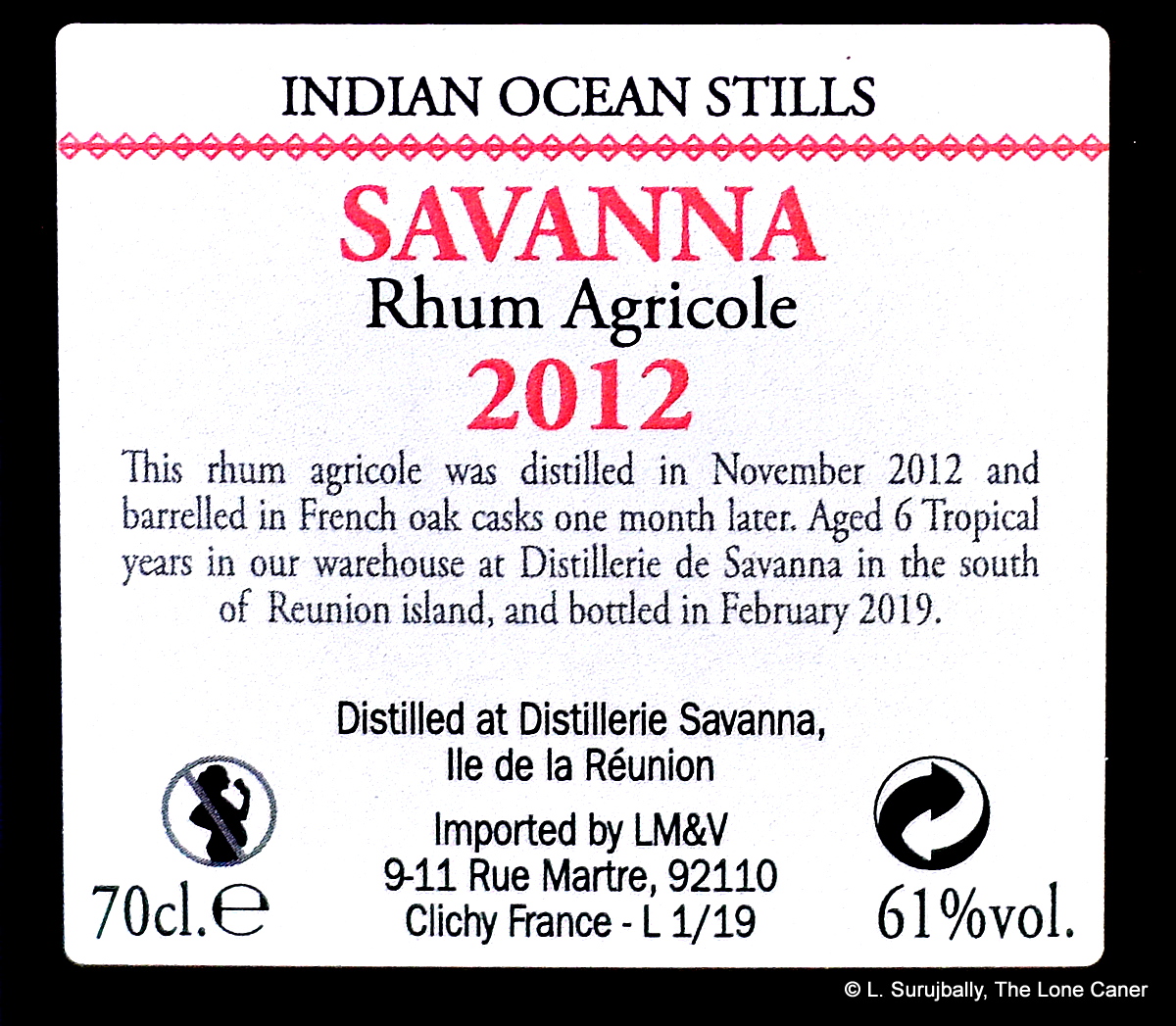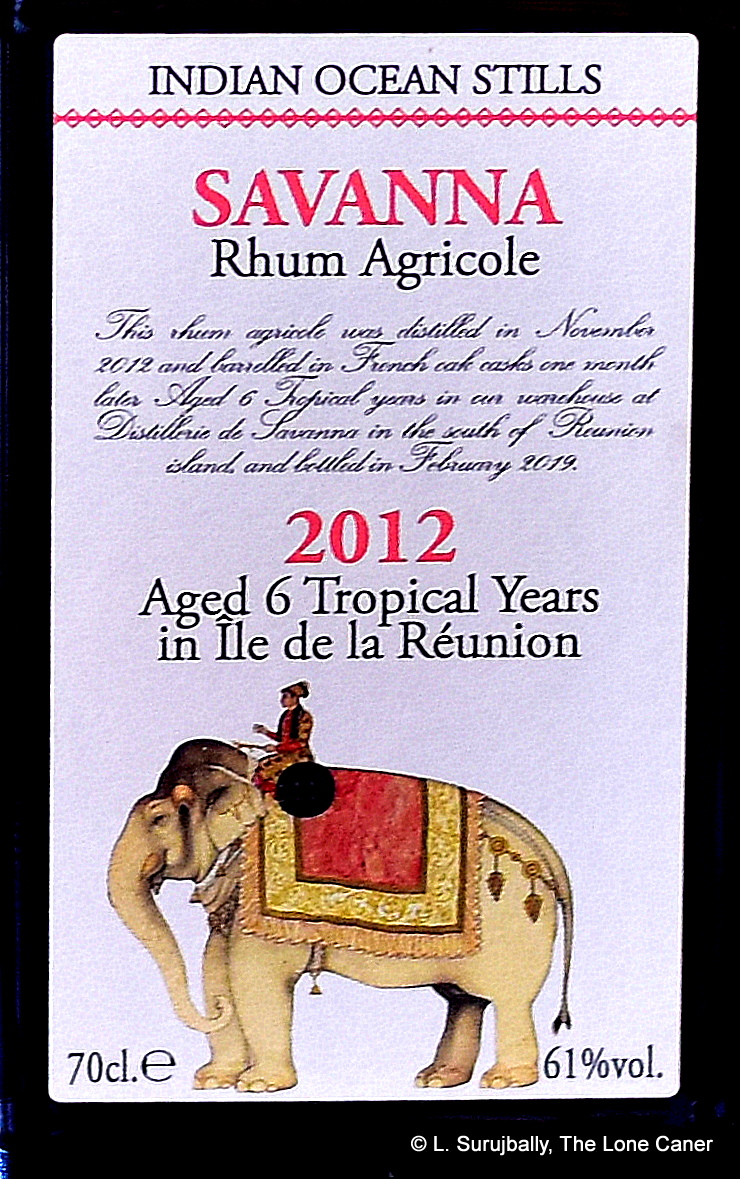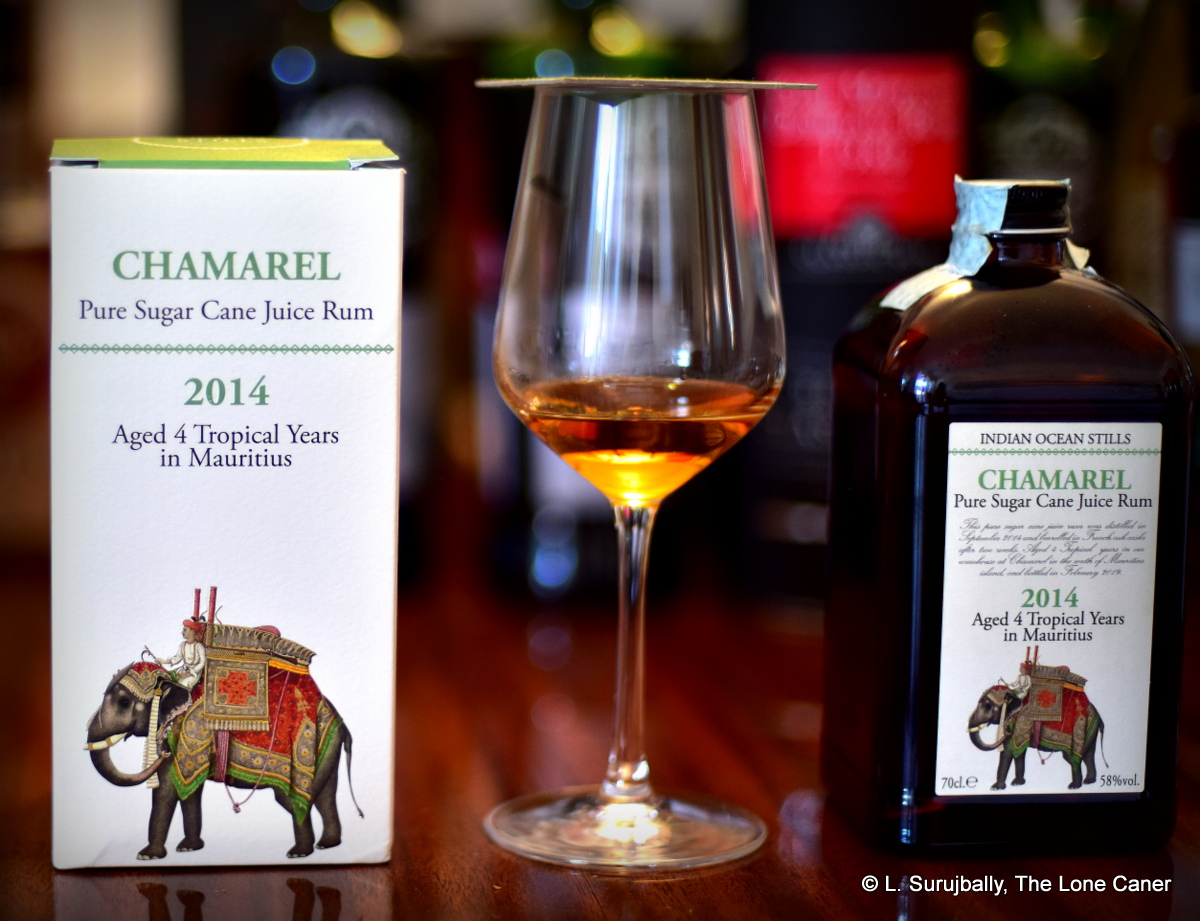
The actual title of this rhum is Chamarel Pure Sugar Cane Juice 2014 4 YO Rum, but Mauritius doesn’t have license to use the term “agricole” the way Martinique, Guadeloupe, Reunion and Madeira do. And while some new producers from the Far East and America seem to have no problem casually appropriating a name that is supposedly restricted to only those four locations, we know that Luca Gargano of Velier, whose brainchild these Indian rums are, would never countenance or promote such a subversion of convention. And so a “pure sugar cane juice” rum it is.
Now, Mauritius has been making rhums and rums for ages – companies like New Grove, St. Aubin, Lazy Dodo are new and old stalwarts of the island, and third parties take juice from International Distillers Mauritius (IDM) to make Penny Blue, Green Island or Cascavel brands, mostly for sale in the UK and Europe. But there’s another distillery there which has only recently been established and come to more prominence, and that’s Chamarel, which was established in 2008 (see historical and production notes below). I hesitate to say that Velier’s including them in their 70th Anniversary collection kickstarted their rise to greater visibility – but it sure didn’t hurt either.
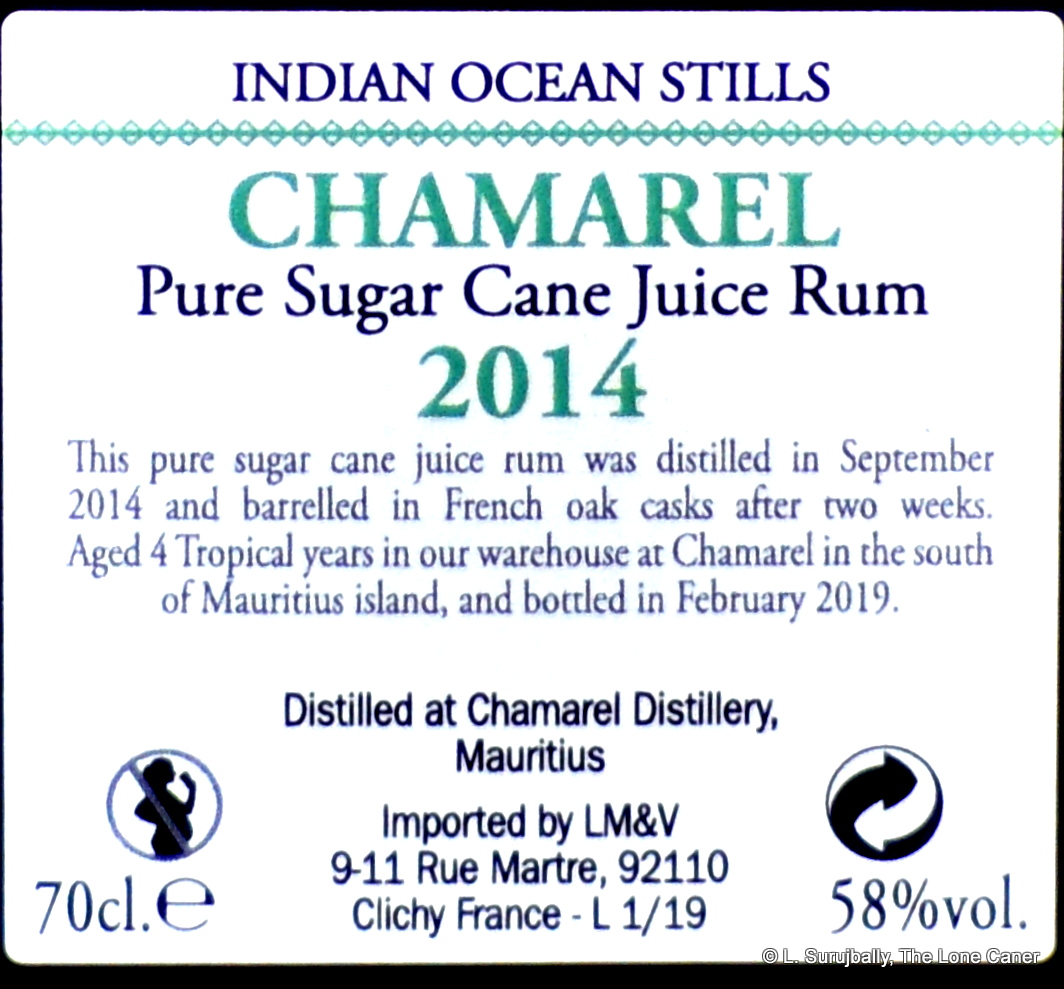 Brief stats: a 4 year old rum distilled in September 2014, aged in situ in French oak casks and bottled in February 2019 at a strength of 58% ABV. Love the labelling and it’s sure to be a fascinating experience not just because of the selection by Velier, or its location (we have tried few rums from there though those we tried we mostly liked), or that strength, but because it’s always interesting to see how such a relatively brief tropical ageing regimen can affect the resultant rum when it hits our glasses.
Brief stats: a 4 year old rum distilled in September 2014, aged in situ in French oak casks and bottled in February 2019 at a strength of 58% ABV. Love the labelling and it’s sure to be a fascinating experience not just because of the selection by Velier, or its location (we have tried few rums from there though those we tried we mostly liked), or that strength, but because it’s always interesting to see how such a relatively brief tropical ageing regimen can affect the resultant rum when it hits our glasses.
In short, not enough. It sure smelled nice – peaches in cream to start, sweetly crisp and quite flavourful, with lots of ripe fruit and no off notes to speak of; waves of cherries, mangoes, apples, bubble gum, gummi-bears bathed in a soft solution of sugar water, cola and 7-up. It’s a bit less rounded and even than Velier’s Savanna rum from the Indian Ocean still series, but pleasant enough in its own way.
It’s on the palate that its youth – with all the teenage Groot this implies – becomes more apparent. There’s peanut butter on rye bread; brine and sweet olives, figs, dates, leavened with a little vanilla and caramel, but with the fruits that had been evidenced on the nose dialled severely back. It’s dry, with slightly sour and bitter notes that come forward and clash with the sweet muskiness of the ripe fruits.. This gets to the point where the whole taste experience is somewhat derailed, and while staying relatively warm and firm, never quite coheres into a clear set of discernible tastes that one can sit back and relax with – you keep waiting for some quick box on the ears or something. Even the finish, which was dry and long, with some saltiness and ripe fruits, feels like a work in progress and not quite tamed, for all its firm character.
So somehow, even with its 58% strength, the Chamarel doesn’t enthuse quite as much as the Savanna rhum did. Maybe that was because it didn’t allow clear tastes to punch through and show their quality – they all got into into a sort of indistinct alcohol-infused fight over your palate that you know has stuff going on in there someplace…just not what. To an extent that it showed off its young age and provided a flavourful jolt, I liked it and it’s a good-enough representative of what the distillery and Mauritius can do. I just like other rhums the company and the island has made better — even if they didn’t have any of Luca’s fingerprints over it.
(#689)(81/100)
Other Notes
La Rhumerie de Chamarel, located in a small valley in the south west of Mauritius, is one of the rare operational distilleries to cultivate its own sugarcane, which itself has a history on the island going back centuries. The distillery takes the title of a small nearby village named after a Frenchman who lived there around 1800 and owned most of the land upon which the village now rests. The area has had long-lived plantations growing pineapples and sugar cane, and in 2008 the owners of the Beachcomber Hotel chain (New Mauritius Hotels, one of the largest companies in Mauritius), created the new distillery on their estate of 400 hectares, perhaps to take on the other large rum makers on the island, all of whom were trying to wean themselves off of sugar production at a time of weakening demand and reduced EU subsidies. Rum really started taking off in post 2006 when production was legalized – previously all sugar cane had to be processed into sugar by law.
The sugar cane is grown onsite and cut without pre-burning between July and December. The harvest is transported directly to the distillery and the crushed sugarcane juice filtered and taken to steel tanks for fermentation after which the wash is run through a copper Barbet-type plate column still (for white rums), or the two-column 24-plate still they call an alembic (for aged and other rums). In all cases the rums are left post-distillation in inert stainless steel vats for three months before being transferred to ageing barrels of various kinds, or released as white rums, or further processed into spiced variations.
